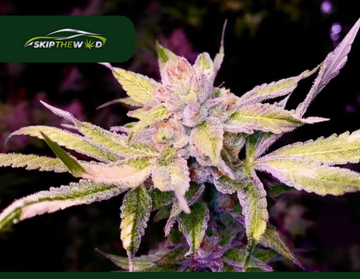Cannabis is one of the most widely used substances among teenagers and young adults, especially in regions where it has been legalized. While cannabis may offer therapeutic benefits for some, its impact on the developing brain is an area of significant concern. Adolescence and early adulthood are critical periods for brain development, and cannabis use during these stages can have long-lasting effects on cognition, behavior, and mental health.
This article explores how cannabis affects the brain development of teens and young adults, providing an overview of potential risks and highlighting the importance of education and responsible use.
Understanding Adolescent Brain Development
The human brain continues to develop well into a person's mid-twenties, with key areas like the prefrontal cortex being among the last to fully mature. This region of the brain is responsible for decision-making, impulse control, and executive functioning. During adolescence, the brain undergoes a process of synaptic pruning, where unnecessary neural connections are eliminated, and important ones are strengthened, leading to more efficient brain function.
Cannabis use during this critical period of development can interfere with these processes, potentially causing cognitive and behavioral changes.
Key Brain Regions Affected by Cannabis
- Prefrontal Cortex: This area is associated with decision-making, impulse control, and complex thought processes. Cannabis use during adolescence can impair the development of this region, leading to poor judgment and impulsive behavior.
- Hippocampus: This brain region is essential for memory formation and learning. THC, the psychoactive component of cannabis, can impair short-term memory and learning abilities, particularly in younger users.
- Amygdala: The amygdala plays a crucial role in emotional regulation. Cannabis use during adolescence can increase the risk of anxiety, depression, and mood disorders due to its impact on emotional processing.
How Cannabis Affects Teen and Young Adult Brains
Cognitive Impairments
Regular cannabis use during adolescence is associated with various cognitive impairments, including deficits in attention, memory, and learning. Studies suggest that teens who use cannabis frequently may perform worse in school, have difficulty retaining information, and struggle with problem-solving. These effects may persist even after cessation of use, particularly when cannabis use starts early and is frequent.
Altered Brain Structure
Research indicates that heavy cannabis use during adolescence can lead to structural changes in the brain. MRI studies show reduced gray matter volume in the prefrontal cortex and changes in the hippocampus among adolescent cannabis users. These structural alterations are linked to diminished cognitive functioning and may increase the risk of mental health disorders.
Emotional and Behavioral Changes
Cannabis use during adolescence is associated with emotional and behavioral changes, such as increased risk of anxiety, depression, and mood swings. The developing brain is particularly vulnerable to the mood-altering effects of cannabis, and early use can disrupt the brain's natural emotional regulation mechanisms.
Teens and young adults who use cannabis frequently may also engage in riskier behaviors, including substance abuse, reckless driving, and delinquency, as cannabis can impair judgment and lower inhibitions.
Long-Term Mental Health Risks
Increased Risk of Mental Illness
One of the most significant concerns surrounding adolescent cannabis use is its link to long-term mental health disorders. Studies show that regular cannabis use during adolescence can increase the risk of developing conditions such as:
- Schizophrenia: Adolescents who use cannabis, especially those with a genetic predisposition, have a higher risk of developing schizophrenia and psychotic disorders. The earlier and more frequent the use, the greater the risk.
- Depression and Anxiety: Early cannabis use has been linked to higher rates of depression and anxiety in adulthood. While some individuals use cannabis to self-medicate for these conditions, the long-term effects may exacerbate symptoms rather than alleviate them.
- Substance Use Disorder: Adolescents who use cannabis are more likely to develop a dependence on the drug and may be at higher risk for using other substances, such as alcohol or harder drugs. Cannabis use during adolescence can alter the brain's reward system, making individuals more susceptible to addiction.
THC Potency and Its Implications
As cannabis becomes more commercially available, the THC content in many products has increased significantly compared to cannabis strains of the past. This rise in potency poses additional risks to adolescent brain development, as higher THC concentrations can lead to more pronounced cognitive and behavioral effects. Products like edibles and concentrates, which may contain high THC levels, can further increase the risk of long-term brain changes in teens and young adults.
The Role of CBD
Cannabidiol (CBD), another compound found in cannabis, has gained attention for its potential therapeutic benefits and its ability to counteract some of the psychoactive effects of THC. However, the increasing prevalence of high-THC, low-CBD cannabis products may limit the neuroprotective effects that CBD could offer.
Social and Environmental Influences on Cannabis Use
While biology plays a critical role in how cannabis affects the developing brain, social and environmental factors also influence patterns of use. Adolescents and young adults who live in environments where cannabis is normalized or who have easy access to it are more likely to use it regularly.
Peer Pressure and Perceived Safety
In regions where cannabis is legal or socially accepted, teens and young adults may perceive it as safe and less harmful than other substances like alcohol or tobacco. This perception can lead to increased experimentation and regular use. Educational efforts to raise awareness of the risks associated with adolescent cannabis use are crucial for addressing these misconceptions.
Legalization and Availability
With the legalization of cannabis in many areas, its accessibility to teens and young adults has increased. While legal dispensaries may enforce age restrictions, illegal channels or lax regulations in some regions still make it easier for underage individuals to obtain cannabis. This heightened availability can contribute to early and frequent use among younger populations.
Conclusion
Cannabis use during adolescence and young adulthood can have profound and long-lasting effects on brain development, cognitive functioning, and mental health. Given the increasing availability and potency of cannabis products, parents, educators, and policymakers need to be aware of these risks and take steps to educate young people on the potential consequences of early cannabis use.
For those who choose to explore cannabis products responsibly, Skip the Weed offers a variety of high-quality options, including:
- Greasy Runtz strain: Known for its balanced effects and relaxing properties, this strain is perfect for unwinding without overwhelming your system.
- Apricot Creampie: A fruity and flavorful strain, Apricot Creampie strain delivers a soothing experience, ideal for stress relief.
Promoting responsible use and informed decision-making is key to ensuring that cannabis can be enjoyed safely without compromising long-term health.









